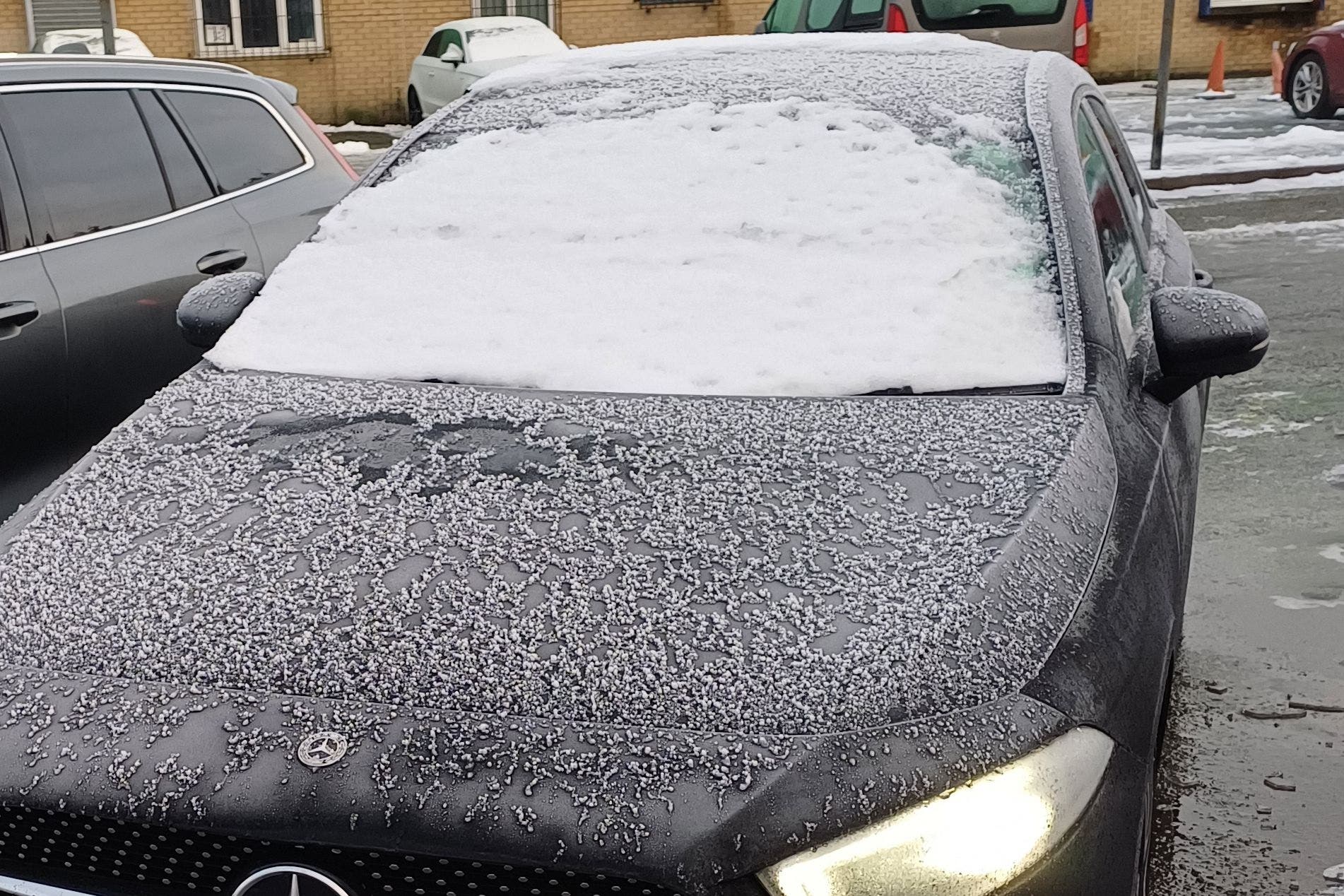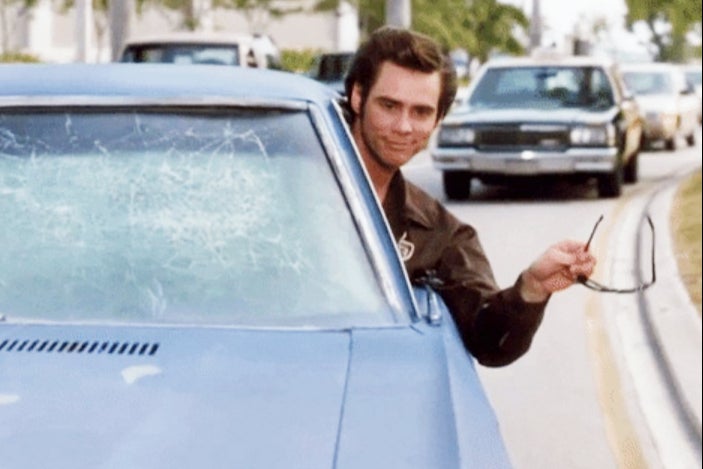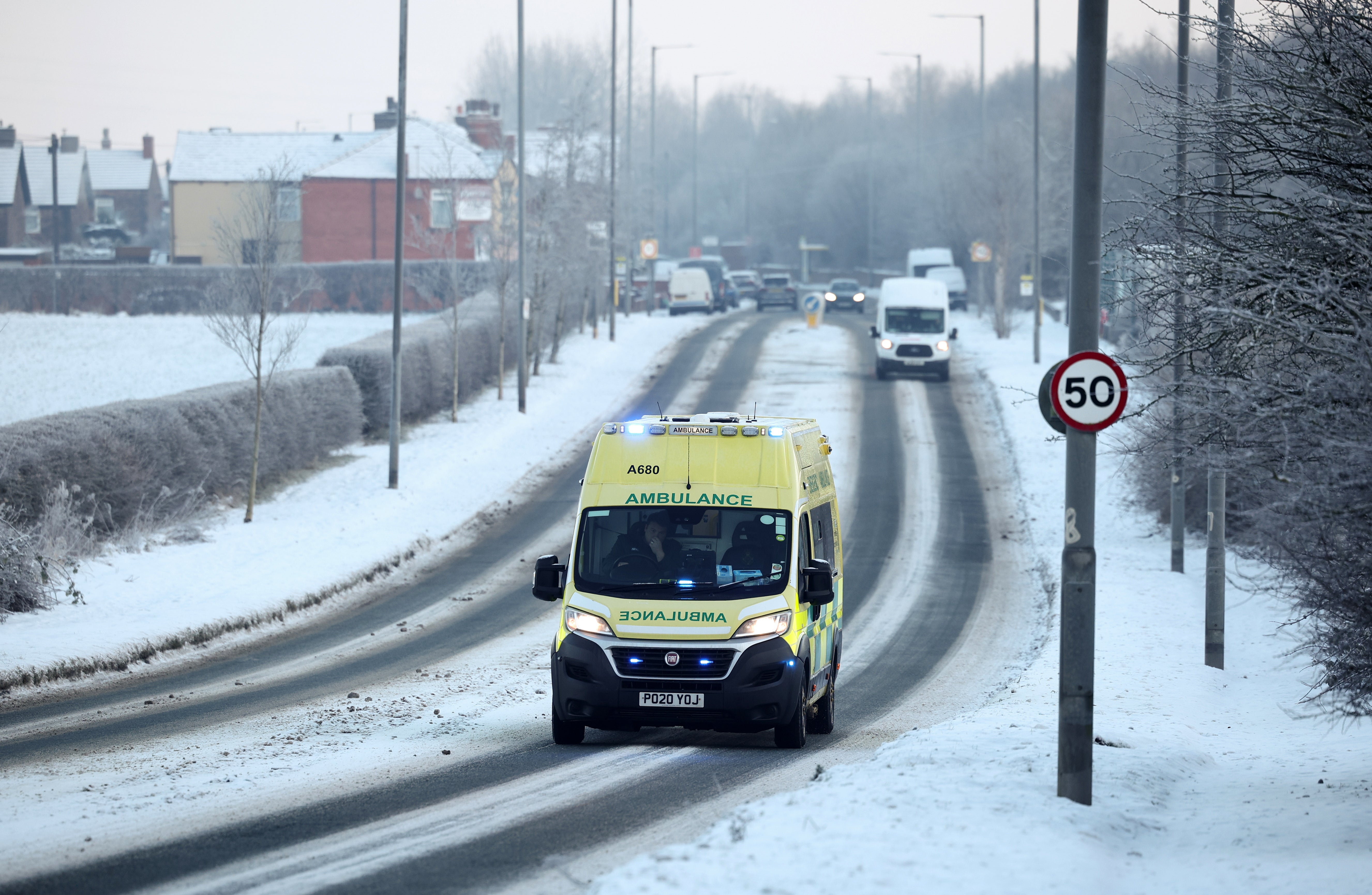
A motorist has been caught driving “Ace Ventura-style” because the car’s windscreen was blocked by snow.
They were caught with their head out of the window in a similar scene to the Jim Carrey film.
Merseyside Police said this is “simply not acceptable” and has reported the driver.
The force posted an image on social media platform X of a Mercedes car covered in snow, with the caption: “Just when you think you have seen it all!
“This vehicle was being driven exactly as you see it in the picture with the driver hanging out of the window Ace Ventura-style.
“We didn’t think we needed to say it, but that is simply not acceptable and the driver has been reported.”
Just when you think you have seen it all! This vehicle was being driven exactly as you see it in the picture with the driver hanging out of the window Ace Ventura style. We didn't think we needed to say it, but that is simply not acceptable and the driver has been reported. pic.twitter.com/atKirqimfE
— Roads Policing Unit (@MerPolTraffic) January 9, 2025
In the 1994 film Ace Ventura: Pet Detective, actor Jim Carrey’s character drives a car with his head out of the window because the windscreen was smashed.
AA president Edmund King said: “We have previously warned of dangerous ‘tank commander’ drivers who just scrape a small hole on the windscreen to peer out, but this example is a much more kamikaze approach as the driver won’t see a thing.
“It only takes 10 minutes maximum to scrape a windscreen.
“Or you can get an electric vehicle which can be preconditioned to defrost the car.”

Under the Road Traffic Act 1988, drivers must have a “full view of the road and traffic ahead”.
Failing to remove snow properly from a windscreen could result in a £60 fine and three penalty points.
Merseyside Police also posted images on X showing the aftermath of a crash between a Land Rover and a car, with both vehicles and a pedestrian barrier badly damaged.
There were “no serious injuries”, the force said.

The UK has recorded its coldest night of this winter so far with more freezing temperatures expected in the coming days.
Overnight temperatures fell to minus 14.4C in Altanharra, northern Scotland, and fell to minus 14.5C on Friday morning, according to the Met Office.
Weather warnings for ice were in place across most of Wales and Northern Ireland, as well as large parts of the east of England, until 10am on Friday.
Tips for driving in sow if you have to
Snow driving is something that many people worry about, but if you need to head out on the road, here are some top tips:
– Ask if you need to drive
The first thing you should think about is whether you need to travel in the snow. If the journey is not essential, it is worth staying at home and not having to negotiate the wintry roads.
– Clear all the snow from your car before driving
If you do need to head out on the roads in the snow, the first place to start is by making sure you have cleared as much snow as possible from your vehicle before setting off.
It is illegal to drive with a windscreen covered in snow and ice, so you should make sure it is cleared properly.

Dedicated de-icing products can be used if the vehicle is frozen over or a good old-fashioned ice scraper will help on the windscreen itself. Do not forget the side windows and rear glass.
You should remove as much snow from the roof and bonnet of your vehicle as possible too, as the last thing you want is hard bits of snow flying off your vehicle. Chunks of ice coming off one vehicle have been known to smash the windows of others.
– Do not leave your vehicle unattended
While waiting for your vehicle to defrost, it is hugely important not to leave it running unattended.
It is times like this that many opportunist thieves strike and that is the last thing you would want to happen.
If your vehicle is stolen with the keys inside or in the ignition, insurers may not pay out, either.
Always stay with your vehicle while it is defrosting.
– Try and stick to the main roads
Once you are behind the wheel, wherever possible you should try and stick to main roads.
These are the most likely to have been gritted and be clear, as more drivers will have been using them too.
Smaller back roads are often likely to have built-up snow still, even some time after the snow has fallen.
It is worth trying to stick to flatter routes without hills if you have the option, too, and particularly in heavier snowfall or in strong winds, these will be the least likely to be affected by snowdrifts.
– Leave plenty of time and keep your distance
When driving in the snow, or any poor weather for that matter, one of the best things you can do is leave plenty of time as the last thing you want is to be rushing.
You should also leave a far bigger gap between you and other vehicles in the snow, too, because the risk of ice and snow means braking distances are far greater should you need to slow down or come to a stop.
It also helps traffic to move continuously without stopping and starting, and reduces the chance of you getting stuck in the snow.
– Be gentle with car inputs
Some of the best advice for driving in the snow is to be as gentle as possible with your inputs.
Harsh accelerating, braking and steering will all upset the vehicle and make it far more likely to spin or lose control.
Maintaining a constant speed, being very gentle with steering and avoiding braking wherever possible will all help in snow driving.
You should also change up gears earlier than you might do normally and it is a good idea to set off from a standstill in second gear as this will reduce the chance of the wheels spinning.
– Pack prepared
The last thing you want to happen in the snow is to get stuck, but this is a risk you need to think about.
Especially if you are driving on more rural or isolated routes, it is important to pack prepared should the worst happen and you get stuck.
So, before doing any longer journey in the snow, you should make sure you’re carrying essential supplies, including food and something to drink, as well as warm clothing.






